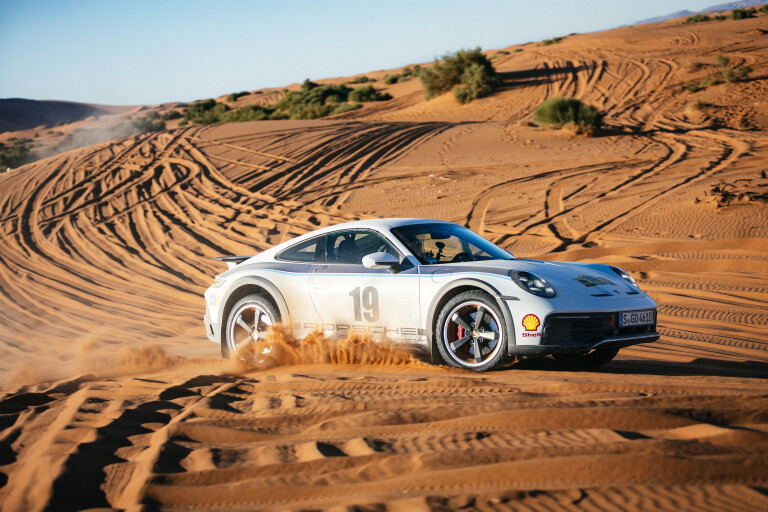
Porsche 911 Dakar operation manual, chapter one.
Open the Porsche 911 file inside your head. Hit the reset button and delete everything you know about the product. Scroll down to the Dakar icon. Hit it and brace yourself for the unexpected.
Your mind boggles in sync with the road that soon becomes a spine-shuddering trail. At the end of it beckons a prancing 180-degree dune which partly dissolves upon first impact. Next thing you notice, the car's underside is peppered with virginal reddish rock-dotted soil.
The blink of an eye later, the sand turns into dust and engulfs the car like floating gauze. While the driver reaches for his X-ray glasses, the camera inside the head keeps registering new sightings like a solitary camel standing proud, a herd of grazing goats, and the silhouette of a stooped Bedouin.
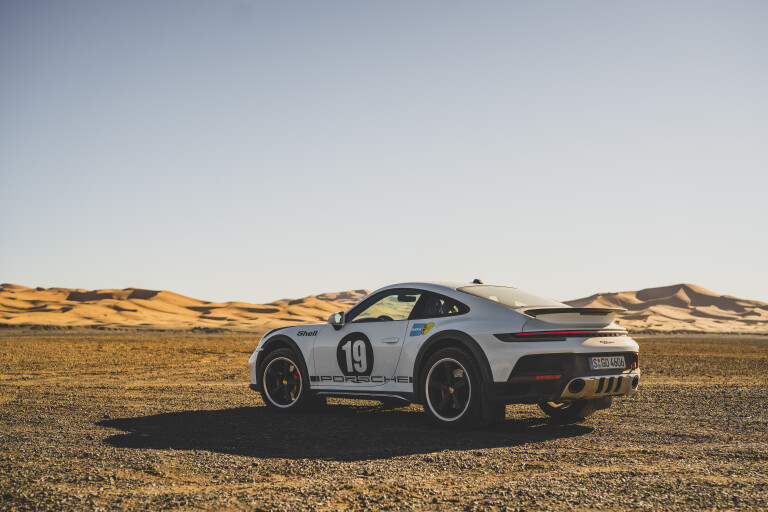
Dominating the rest of the scenery is a vast mountain range worth a National Geographic cover, which merges in the distance with an equally epic wadi. Blurring the picture at random are fat clouds of beige powder that attack head-on, blast along the side windows and darken in fistfuls the rear-view mirrors.
All the while, the lead car is storming ahead no holds barred, airborne one moment and crash-landing the next.
Welcome to Morocco and two days of serious off-roading in Mother Nature's own Dakar Rally lab, where Toyota, Audi, Prodrive, Ford, Century Racing and X-Raid Mini conducted their final shakedown tests for the 2022 event merely six weeks prior to the arrival of the big Porsche party.
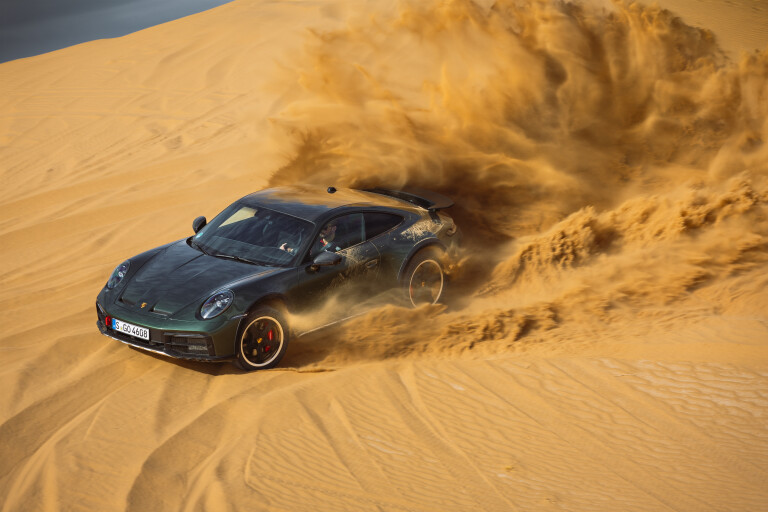
It's 8:30am and the temperature gauge still reads only 4ºC, but six hours later the sun will be pelting down again at an unfiltered 22ºC. It hasn't rained for months in this remote corner of paradise, and the little water that did come down from the embarrassingly blue skies is nursed jealously in small private basins that form tiny oases in this huge sea of rolling sand.
"Switch to Rallye mode now," is the first order that comes crackling through the intercom. "And watch out for what we call Titanic rocks – you may only see the tip of them, but they can be huge and scalpel-sharp."
We drive in pairs: lead car followed by two 911s manned with two journos each who swap seats every hour or so. Passengering is notably less fun than hanging on the wheel. Why? Because legs, arms and torso are constantly preparing themselves for impromptu impacts which are either a lot worse than expected, or barely worth bothering.
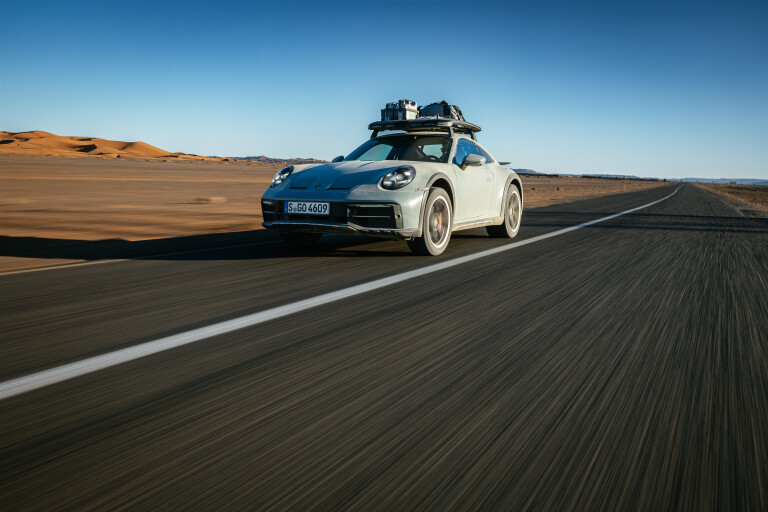
The last thing you want to do in this unfathomable environment is slow down and grind to a halt. Walter Röhrl, two times World Rally champ and Porsche brand ambassador, duly got stuck on a crest. Daniel Abt, former Formula E racer and popular YouTuber, won the trip's first fender bender award.
Although the Dakar is a proper 911, it looks, feels and performs differently. At 161mm, the baby whale tail model rides way (50mm) taller than a Carrera 2/4. In Off-Road mode the ground clearance increases even further to 191mm, which takes you – numerically at least – toward thoroughbred SUV territory.
In combination with the comprehensive underbody protection, super-duty all-terrain tyres courtesy of Pirelli and a completely different set of dynamic algorithms compiled in the sand pit instead of on the race track, the stacked chassis renders this 911 almost invincible in the rough.
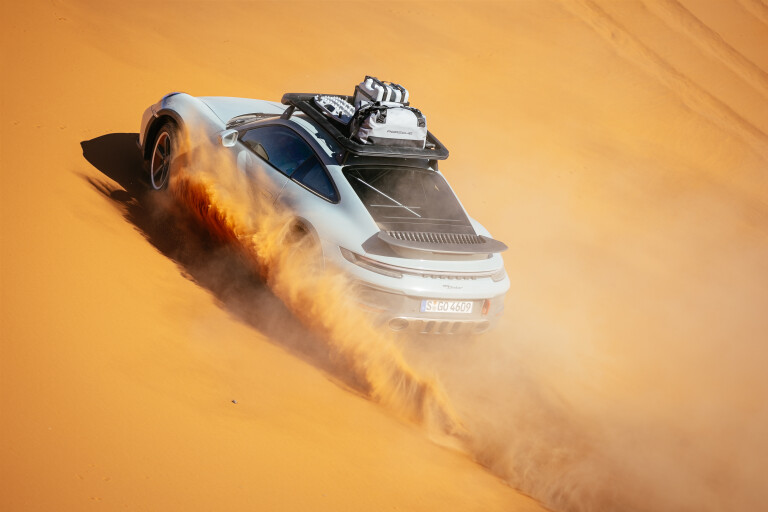
All you must do is go-go-go for it – keep up the momentum, don't let the revs drop below 4000rpm, lock the transmission in manual to avoid optimistic upshifts, leave traction control in Sport or switch it off altogether.
Where dust, dirt and gravel morph into quicksand in the blink of an eye, you are going to need all 570Nm of torque.
It's the tall bearded guy on the radio again. "Select Off-Road please for the next 20 minutes. Don't follow the car in front of you religiously – on this relatively homogenous turf, fanning out can improve visibility and safety. And remember: no overtaking, no faster than 150km/h."
After a brief blast down the arrow-straight dry lake stretch, the trek diverts from the marked route, and S-GO 4610 is duly back in hardworking order. There is notably more wheelspin required now to plough through with verve, the ruts are getting deeper, and what looks like a solid section could either be a vast knee-deep fake beach volleyball court or a large thinly veiled flagstone.
The lead car is fishtailing angrily on the optimistic approach to a rise, then quickly aborts the attempt before swerving back down to the wadi.
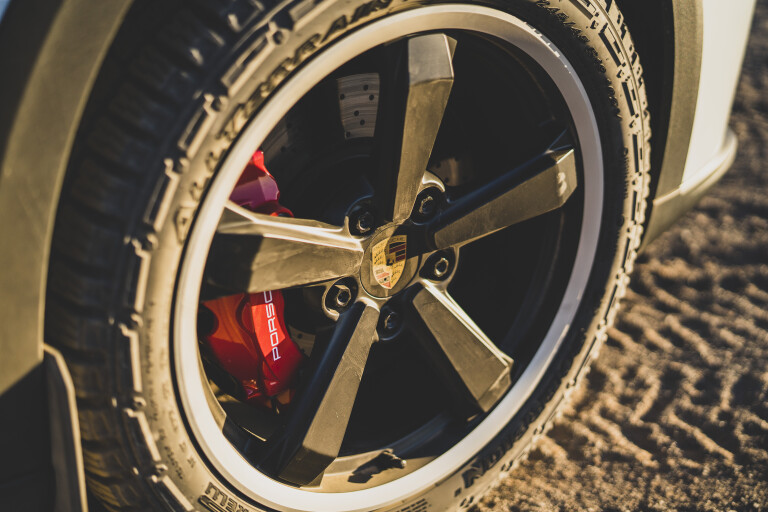
No experiments, please. All that matters now is to maintain the flow.
At the end of day one, the onboard computer signalled a consumption of 30L/100km at an average speed of 24km/h.
Quicker than goat and dromedary, but not nearly as frugal.
Allow me to interrupt this disc-juggling bouncy castle experience for an important message to all Porschephile collectors and investment-hungry millionaires. Sadly, the order books for the 911 Dakar are firmly closed, even though the production run was bumped up from 1984 units to 2500 at the last minute.
Trouble is, you can't even use the saved $491,400 as down payment for the still rarer and pricier manual transmission 911 ST that is out later this year, since all 1963 items of the wingless GT3 RS have long been spoken for, too.
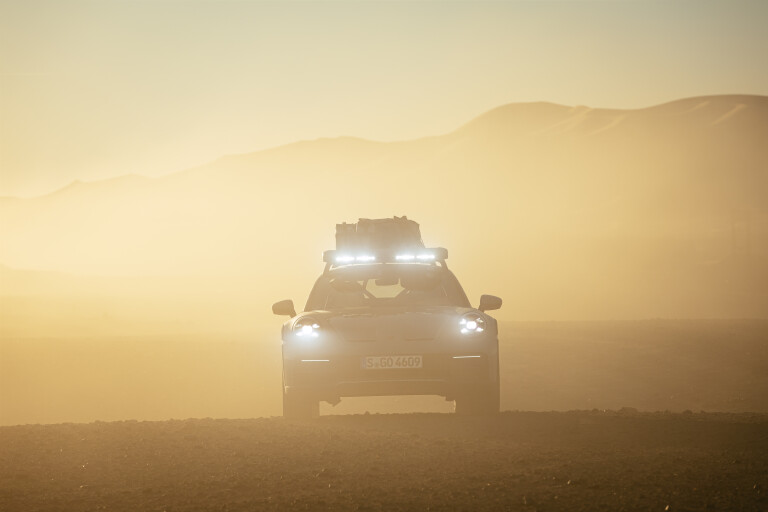
Do not despair. There is a good chance that the Dakar package will reappear on the facelifted 2024 model year Porsche 911.
Better still, the Dakar concept is also tipped to migrate in detuned form to the Panamera Sport Turismo and Taycan Cross Turismo.
Having passed the first off-road tests with flying colours, we are now eager to find out how the Dakar treatment changes the character of the 911 on weathered bitumen. Can leadfoots live with the 240km/h top speed imposed by the all-terrain tyres?
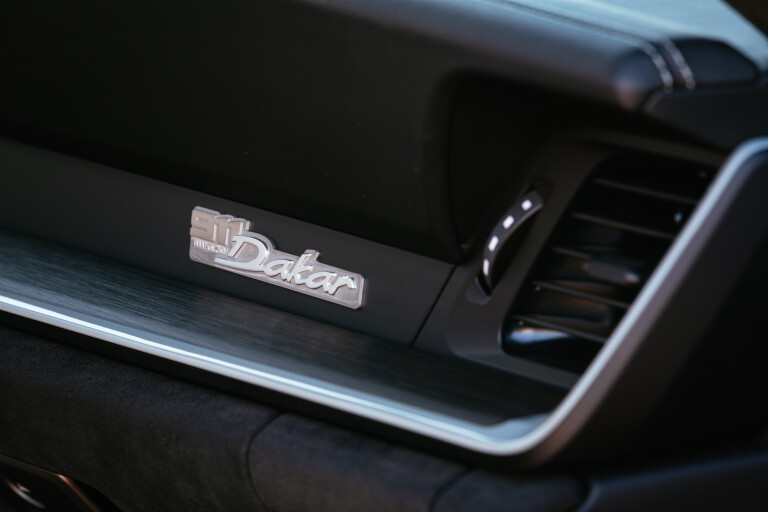
Alternatively, Porsche will fit standard P Zero or Sottozero rubber and you can go as fast as you like – except on gravel or rutted trails because the low-profile footwear is rather vulnerable. Another key question concerns the effect the extra ground clearance and the added kinematic compliance have on the car's B- and C-road manners.
If our first impressions on the N10 and N13 freeway are anything to go by, the extra wheel and spring travel, the cushier calibration and the reduced sensitivity to wind-up and shock pay off on all surfaces. The same goes for the lift system being operational on all four wheels, not only the front axle, which also stalks over XXL speed bumps with aplomb.
Drive modes have been accordingly tweaked for the Dakar's wider band of talents. Normal, Wet and Sport are in essence unchanged, but Sport Plus is replaced by Rallye geared for more dynamic leeway, wilder drift angles and extra wheelspin.

The Off-road mode automatically selects the tallest ride height, shifts more torque to the front wheels for better traction and locks the rear diff to further improve low-speed grip. Deactivating traction control in two steps (Sport and Off) frees even more momentum, which can help to dig the car out of deep sand or snow.
On top of all this, Rallye Launch Control warrants maximum take-off drama. Comments chief project engineer Thomas Krickelberg:
"Balanced active torque feed to all four wheels is essential because when it comes to the crunch in difficult terrain, forward thrust has priority over stability."

The Dakar shares the all-wheel-drive hardware, active anti-roll bars, eight-speed dual-clutch transmission and the 353kW 3.0-litre engine with the 911 GTS. Donations from the GT3 include stiffer dynamic engine mounts, rear-wheel steering, roll cage and bum-pinching race bucket seats.
Rich night-time 'roo hunters may want to add the optional lightweight roof rack equipped with water and petrol canisters, four auxiliary LED lights and a pair of Maxtrax. The bolt-on crow's nest is incidentally big enough to pitch a tiny but sturdy one-man tent with a 140kg payload.
Measuring 203cm in height, I felt nonetheless more comfortable glamping at Erg Chebbi Camp Porsche, a minute morsel of the huge desert serving as temporary five-star stage for 30 tents complete with electricity, running water, toilets and sandflies.
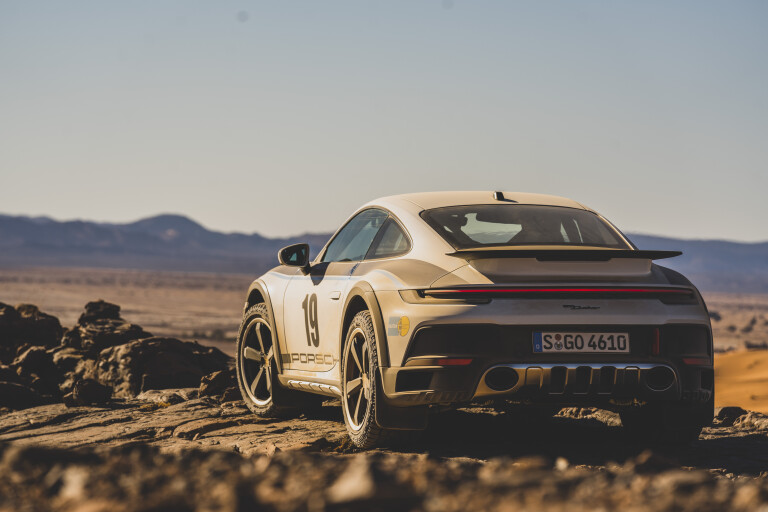
Over mint tea, vegetable and beef tagine, date pudding and a glass of arak, the key individuals involved took us through the long-winded gestation process of the 911 Dakar which kicked off in 2013. As is so often the case, R&D pushed hard for the project while sales fought it by producing one low estimate after the other.
A production-ready 991-based version was called off at the eleventh hour, but in the end, CTO Michael Steiner and sportscar head honcho Frank Walliser convinced the board to sign off on what later turned out to be the fastest sell-out in corporate history.
When asked what he would have added if there had been no budget restraints, Krickelberg answered like a shot: "A bespoke Dakar cabin with different colours and materials and a more elaborate specification would have been nice to have.
"And of course, you can always spend more on less weight. We got there by removing the rear seats, substituting steel for aluminium, using CFK for most hang-on panels and fitting thinner windows."
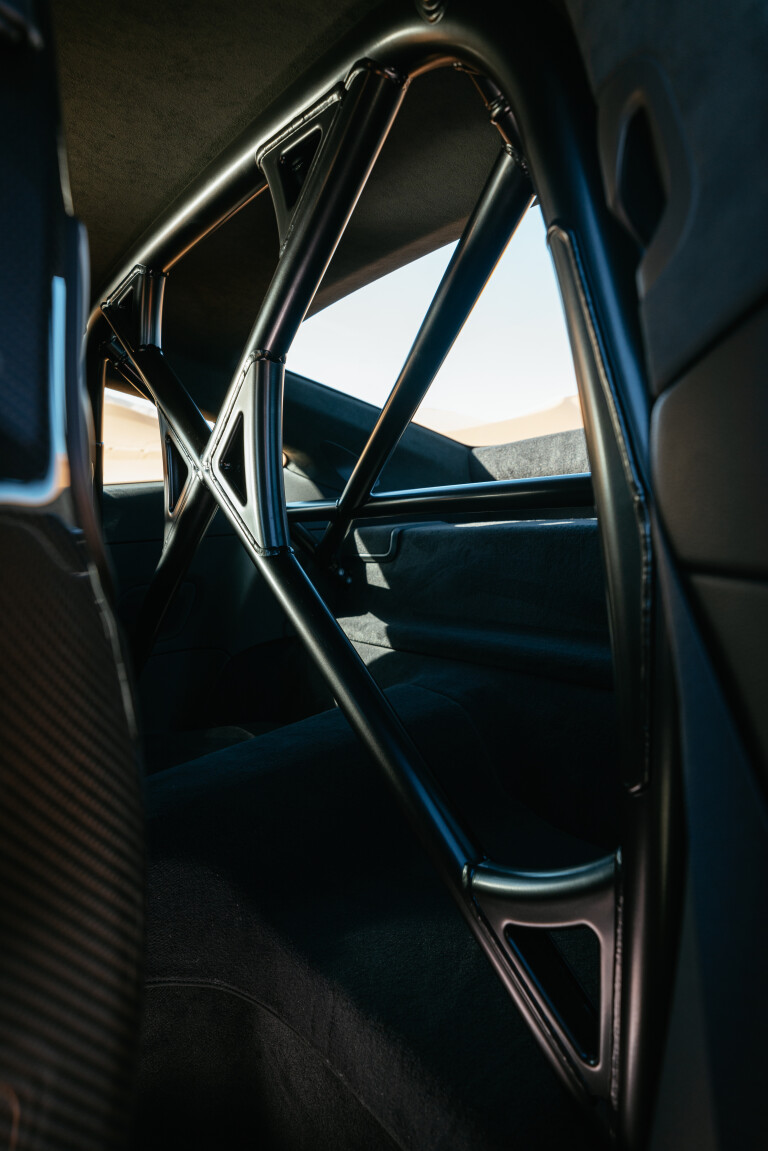
At 1605kg, our white Roughroads special aping the classic blue-red-and-yellow Rothmans livery weighed only ten kilos more than the base 911 GTS.
Because of the off-road-oriented AWD system, the bespoke engine and transmission software and the larger frontal area, the Dakar's 3.4sec acceleration time from 0-100km/h misses the benchmark set by its low-riding stablemate by one token tenth.
Though there are eight forward ratios to choose from, fourth is the tallest gear you will ever use off the beaten track. Since the maximum torque of 570Nm straddles the rpm curve like a solid balance beam from 2300rpm all the way to 5000rpm, compulsory downshifts in search for even more grunt are the exception, not the rule.
As unique as the vehicle concept of the 911 Dakar is the specially composed soundtrack. Time and rhythm are still in sync with the forced-induction flat-six, but the tone travels at a brisker pace now and it feels more intense, the part-throttle background choir definitely bass-heavier, and the raspy vocalisation of the standard sports exhaust no longer softened by a comprehensive cabin insulation kit.
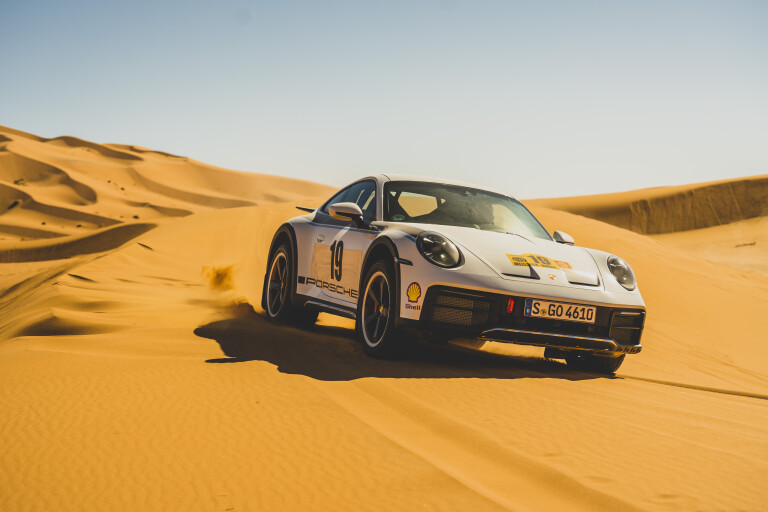
The deeper and hoarser pitch can also be put down to the larger 650W cooling fan, the big air box which is a resonance chamber in its own right, and the larger side-mounted nasal radiators.
As a result, the chainsaw shriek of a high-revving GT3 engine is superseded in the Dakar by a darker mid-range howl and a louder flat-out roar. The stairway to decibel heaven climaxes at 7500 physically dense high-mech revolutions.
What about steering and brakes, you ask? Off-road, the direction-finder feels almost eerily light at first, but the connectivity improves with time and practice.
The main haptic change agents are alien surfaces like dunes, drifts and debris. The almost twitchy low-speed effect of the busy rear-wheel steering is enhanced by the special-purpose tyres which feature much softer sidewalls and a virtually indestructible double-ply carcass.

While tyre inflation is 39psi all-round on sealed blacktop, the pressure must come down in two steps as soon as the sand and the wind shape the topography any way they want.
Letting air out is the easiest trick in the book, but those who cannot rely on the services of a Pirelli service truck should either bring an air compressor or a couple of Holy Rosaries.
"I'm going to get myself a Dakar in Oak Green metallic," stated a poker-faced Walter Röhrl who already owns eleven rare Porsches and currently has a restomod 356 Speedster in the works.
"Dunes are thin on the ground in Bavaria, but we have plenty of dirt roads where this car is bound to shine."
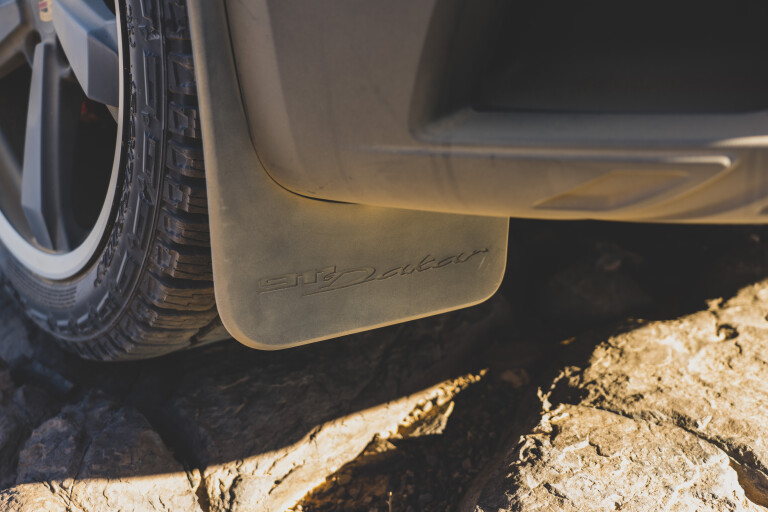
True enough, a couple of hours into the crisp but freezing second day, the special 911 finally found the habitat it was designed for: reasonably solid ground covered with an amorphous three-inch layer of shingle, caked mud, grainy sand and dust.
On the heavily patrolled trunk road from Moulay Ali Cherif to Et-Taous, the car still behaved pretty much like a softer-sprung GTS. Out in the wilds, however, on Walter's imaginary dream circuit drawn into the sand with a stick, we were speed-waltzing in convoy through impromptu corners and fantasy esses like hopeful disciples of the late Ken Block.
Steering and throttle set the pace, determine the pattern and dictate the attitude. Touching the brakes isn't even part of the script.
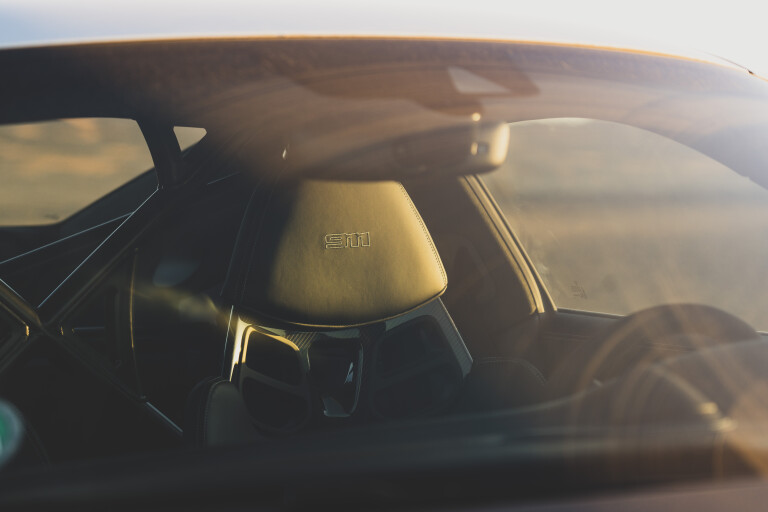
The child inside may clamour for the cop magnet bi-colour shrinkwrap Rallye Design pack complete with pseudo-historic decals, but older white men like me would rather have a stealth version in Shade Green with black chrome-rimmed five-spoke Fuchs-style alloy wheels.
Since the standard specification leaves little to be desired, just about the only factory options worth considering are said special paint job, a lightweight composite roof, the Burmester sound system and an extra patch of leather here or there.
Carbon-ceramic brakes, a popular extra on many high-performance Porsches, are off-limits for the Dakar because small stones would quickly destroy the delicate compound rotors. Instead, the Desert King boasts grooved discs designed to promptly grind or eject small stones and grime.
It takes forever before the belief finally sinks in that this 911 can do what a Cayenne can, and then some.

The only exceptions are the less extreme approach and departure angles that put big-air manoeuvres on the don't list, make you slow down out of courtesy to fifteen grand worth of carbon-fibre skirting prior to steep climbs and descents, and rule out pedal-to-the-metal stunts over staggered transverse ripples that typically vary in depth and sequence.
In contrast, surfing the sands from dawn to dusk is this Porsche's favourite pastime. Like a motorised kiteboard, the Dakar rides the neo-solid waves with a rare mix of acumen and aggression, always on the alert yet ever-playful, going all-in but never overstretching its dynamic mojo.
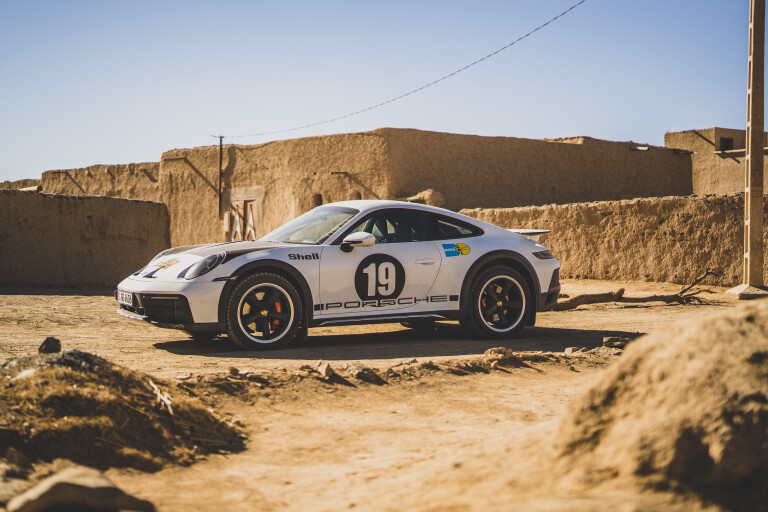
Porsche 911 Dakar operation manual, final chapter.
A near-identically equipped Carrera 4 GTS is almost $140,000 cheaper than the less fast and less universal Dakar. So why not democratise the essence of the Desert King by creating a 911 Allroad?
That would teach the boys at BMW M and Mercedes AMG a lesson while giving Audi Sport even more food for thought.

COMMENTS